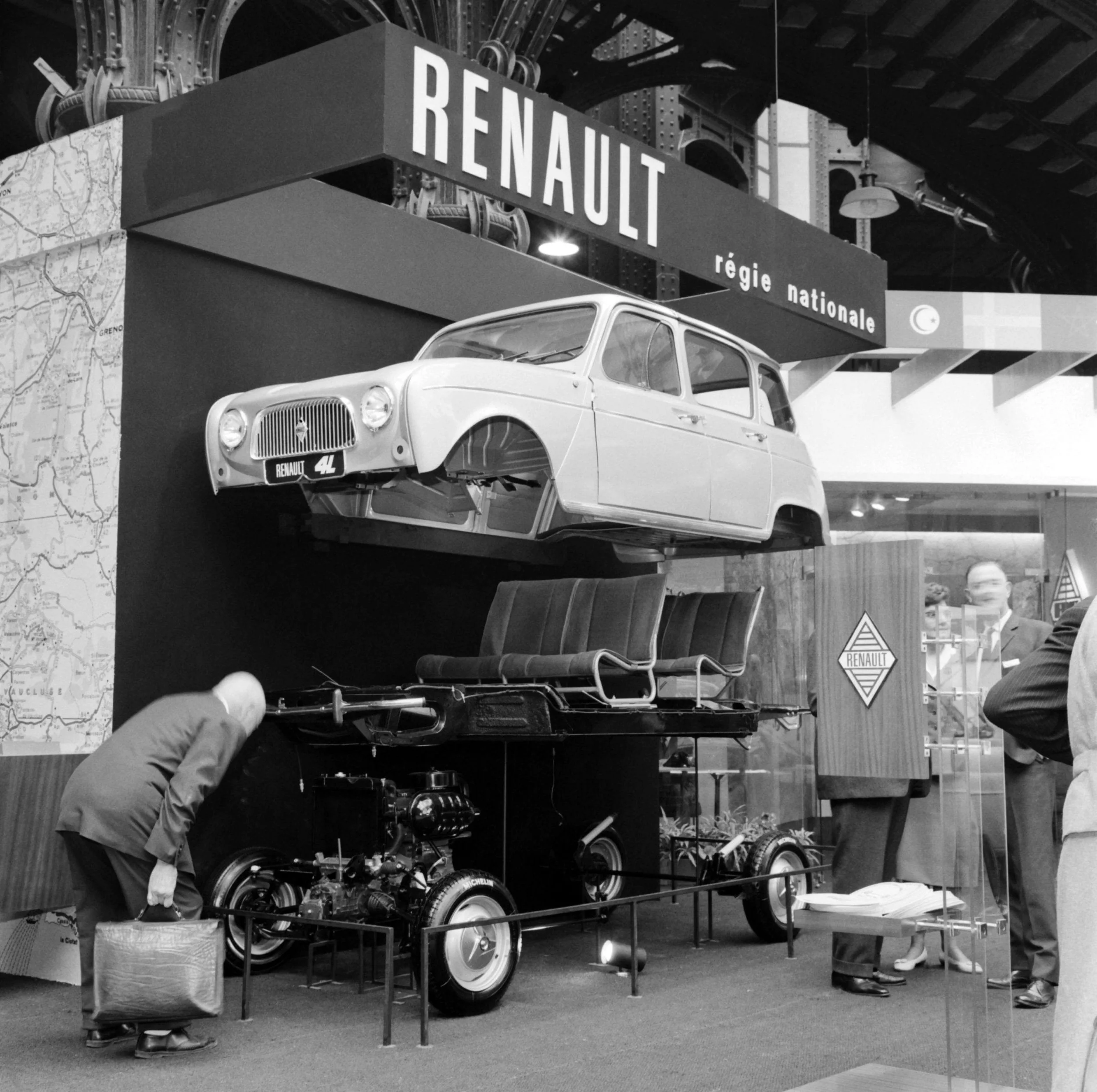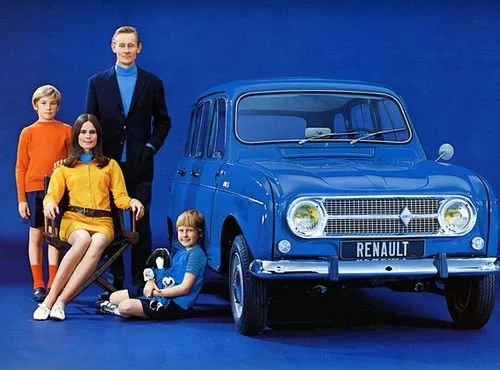RENAULT 4L: The Gitanes-smoking MyGyver of proletariat movers.
“I drive this car to avoid attracting attention…and getting kidnapped.”
This was my father’s go-to line when asked why the hell he was driving a run-down, worn-out, depressingly sad, four-wheel excuse for an automobile.
The year was 1985.
The same year Tears For Fears’ song “Everybody Wants To Rule The World” ruled the world. It was also the year when those of us destined to ride in this forsaken machine would instead SHOUT “These are the things I can do without, come on!”
Come on, indeed.
By the time he purchased the vehicle at the center of this story, it was already fourteen years old and in a level of neglect that felt more like fifty years. Remember, many cars in the 70s would begin to rust and fall apart just after you signed the contract.
Beauté et confort…no.
Know then that in the intense instability rollercoaster that was my family life during the mid-eighties, this was a particularly difficult downward spiral. For my father, coming from having owned a consecutive series of four Datsun 280ZX (two of them Turbo) in a mere six years, to end up with a sad excuse of a car was, I am sure, a low point. But show this he did not.
“Mic, Mic, come outside to see… it’s red!”
As if the color somehow made it better.
The car in question was a 1971 Renault 4L, also known as the Quatrelle. Yes, it was red, if one looked at the door frames and the engine bay. But outside of those areas, the color was more akin to a dried-up, bloody diarrhea, red.
How we ended up with this car, I do not know. But have it and keep it we did, for seven years. During those years, the disgust I initially felt for it, the sensation of a bruised ego forcefully being pushed down a few notches and shoved inside this dilapidated proletariat-mover, turned into a deep appreciation and even what one could call love for the little car, which, despite its age and appearance, went above and beyond its humble origins.
But that came much later.
Attention à votre têtê, monsieur.
It is not uncommon to pass by an unfortunate individual who is homeless, flanked by a shopping cart, and find standing next to this person a dog, ravaged too, sometimes by disease and hunger. Yet the dog stays with his human, eats whatever the human gives it, or not, and sleeps in the same horrid conditions. Yet, it is still capable of wagging its tail upon being called by its downtrodden companion. That level of loyalty is what this little Frenchie displayed with us. Loyalty notwithstanding, the little Renault, which my first girlfriend nicknamed “Pascualito” (no idea why) had an interior that was as luxurious as a latrine.
Élégance et sophistication pour la famille…
Creature comforts included: creaking spring seats that continued bouncing long after the car had stopped. Horizontally sliding half windows that were easily opened… from the outside. Four amazing put your hand inside the trap door, door opening mechanisms. Basically, this was four horizontal oval holes in the interior upper edge of each door, below the window, meant for you to slide the palm of your hand in and force down a small paddle within the sheet metal which would then unlatch the door, thus allowing you to… escape.
This last feature sent shivers down my spine, as well as my best friend’s spine, Ricky, for we immediately recalled the torturous hand-in-box mind control pain test Paul Atreides is subjected to by the Bene Gesserit Reverend Mother, aka “the witch” in David Lynch’s “Dune” – which we had seen weeks earlier.
“I must not fear. Fear is the mind-killer.” - So is pride.
Somewhere, when building this car, a decision was made, more like an inside joke, to use materials for the areas that brush up against your legs, arms, and shoulders, which were extremely rough and unrefined. One could still hear the faint echoing laughter of the workers that assembled this car, Gitanes cigarette dangling from their mouths, imagining some poor mademoiselle’s dress getting caught on the rough edges as she stepped out, tearing her dress and leaving her exposed in front of gawking men. Don’t laugh too hard, it happened to my girlfriend, I was there.
“Sss….Pute bourgeois!”
As unluxurious as the Quatrelle was, it was incredibly utilitarian and ridiculously easy to fix, which remembering how many times it had to be fixed, was, in hindsight a blessing. Although the purchase of the little Renault 4L preempted it by an entire year, the car provided us with a complete MacGyver season of quick fixes and creative repairs. Once we resorted to using Double Bubble gum to attach the long gear shaft to the gearbox (which is ahead of the engine) when it decided to detach itself while going from 3rd to 4th. My poor father, left looking ridiculous as he incredulously waved the shaft in his hand as if challenging other drivers to a duel with a medieval Spanish Florete.
For a time, one of the most memorable rituals involved having to turn the ignition on and off at each stop light because the clutch had given up the ghost. The exact process required leaving the car in gear (usually 2nd) and starting the car, which resulted in a violent shake, proceeded by a mashing of the throttle, followed by more shakes until the car started and settled down to a comfortable (for the gear) speed. This solution worked until you arrived at another stoplight, whereupon the car would be brought to a shaking stop, still in gear of course, at which point it would die. Unless you had mastered a ritual that involved turning the ignition off right before the car started shaking as it was about to stop. This did not make the stop less violent, just more abrupt, and less drawn-out. Thinking back, I am not sure why this felt more dignified, for our ego at least, but it did. Still, it must have looked just as bad to those behind the car, as the sudden stop seemed as if you were brake-testing them. To be fair, this was not the Quatrelle’s fault. It had been poorly treated in its prior life.
Austérité… c’est magnifique!
One last point about the transmission. The center dashboard’s protruding umbrella-like gear shift lever was at first a curiosity but later became a potential weapon, for when changing gears, the driver’s arm was perfectly positioned to elbow you in the eye if you happened to be in the passenger side looking down at the floor, or picking up something, or with your head in the clouds, sulking, as teens are wont to do. Sometimes the driver’s elbow would hit a person in the left shoulder if said person was of the portly sort.
Nonetheless, the little Quatrelle was remarkable. Not because it broke down, but because not once, in any of these ridiculous occasions, were we ever left stranded. Yes, it required MacGyvering our way out of a problem, but no problem was ever un-MacGyverable. It always took us to our destination, ravaged and dirty from working on it, yes, but we got there, and it got us home, always. Even up mountain roads, where we could feel our sphincters collectively tighten, our butts ever so slightly lifting from the seats, as if helping Pascualito weigh less as it channeled Kate Bush’s spunk in order to run up that hill.
One day, to honor the little car’s heroics, my father decided to replace its Nimitz Class Aircraft Carrier-sized helm (a naval term for steering wheel), with a 350mm Momo Monaco racing one. At first, I could feel the little française insulted by the change. Surely, giving a racing steering wheel to a car fitted with Renault’s not-racy 845cc Billancourt engine - which made an asthmatic 38 horses, and which by this time surely half of them had already left the barn - seemed like a cynical effort to ignore its origins and mission. Like trying to make religion logical or adding a thoughtful character to a reality show.
Still, the steering wheel did make it easier to drive it. It looked better from the driver’s seat (better to imagine you are in a race car than a crap car) and you could finally turn the wheel and not get your knuckles scraped by the left door when turning – the original wheel was not perfectly round, I’m afraid to say.
I am not sure what happened to the Renault 4. Where it ended its days. I was not there when it was sold, given away, or left on the street. I never asked; like a humiliating memory, its whereabouts were best left unsaid. But I am sorry it was never given a proper goodbye.
The little Frenchie might have been a running gag (literally) and a sign of how low my father’s resources had reached, but it was a noble beast and in retrospect, it deserved more love.
au revoir mon cher ami...





